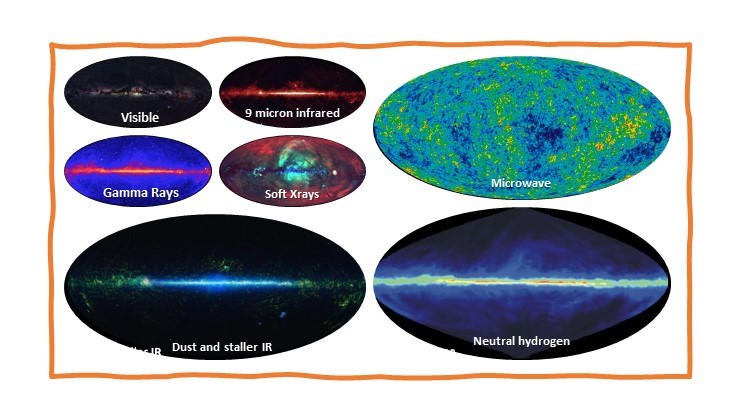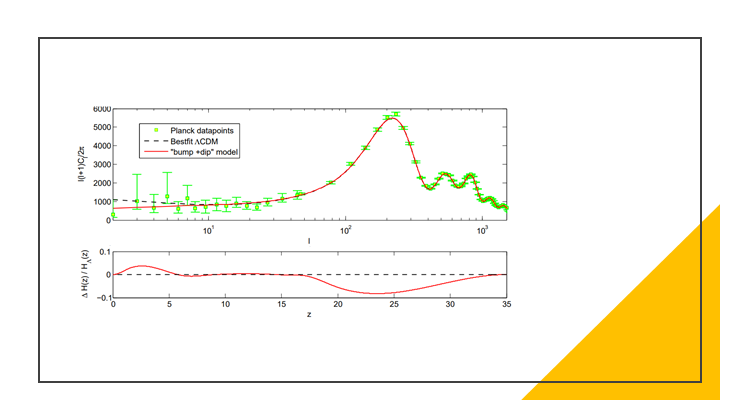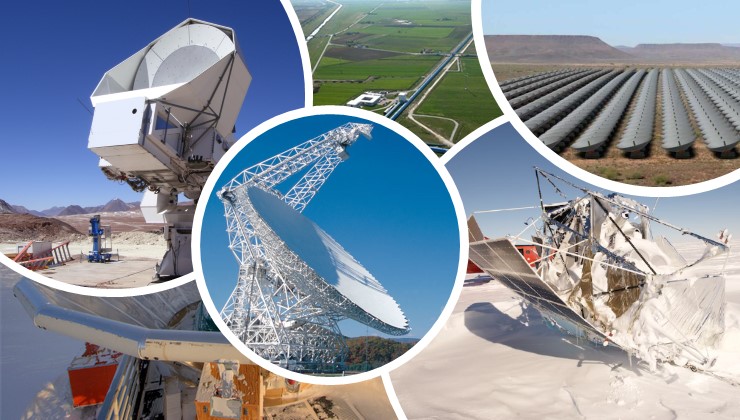CMBAns: A software package to explore history and fate of our universe
-
April 16, 2022
-
1181 Views
-
0
Likes
-
Comment
CMBAns is a software package that is developed to facilitate the theoretical cosmologist for fast and accurate calculation of the cosmological power spectrum. The advanced features of CMBAns will the researchers to investigate many theoretical cosmology models which were unexplored beforedue to the lack of advanced software packages.
Please describe the broad field of your research
I mostly work in cosmology, which is a branch of astronomy, concerned with the study of the origin and chronology of the universe. Cosmology can be broadly classified into two main branches, physical and observational cosmology. In physical cosmology, researchers are more concerned about studying different theoretical models. Physical cosmology, as it is now understood, began with the development in 1915 of Albert Einstein's general theory of relativity, followed by major observational discoveries in the 1920s: first, Edwin Hubble discovered that the universe contains a huge number of external galaxies beyond the Milky Way; then, work by Vesto Slipher and others showed that the universe is expanding. The conclusion of the expanding universe is that, if we go back in time then there should be a time where all the matter and energy of the universe will come to a point, that is the universe has a beginning.
Theoretical physicists start developing models to understand how the universe began and how it evolved in past and what will be the fate of the universe in the future. Several models have been developed in the past 100 years. Modern physical cosmology research is dominated by the Big Bang theory, in particular the Lambda-CDM model.
On the other hand the observational cosmology, researchers observe the universe on a large scale using different cosmic rays like microwave, infrared, radio, etc. As cosmic rays come to us from different epoch of the universe, the wavelength of the ray also changes. These different rays can actually map the universe at different ages, such a cosmic microwave background can give a map of the universe which is just 380,000 years after the Big Bang. Similarly, radio waves of different wavelengths can map the universe at various times from about 400,000 years after the Big Bang to the present era. Therefore, observational cosmologists focus on making extremely precise maps of the universe in different wavelengths by analyzing data from different telescopes.
Cosmologists then fit the theoretical models with the observational results and try to understand which cosmological model provides results that can more accurately match with the observations. I have worked in different aspects of cosmology in past. However, at present, my research is mainly focused on this particular aspect of cosmology, where I calculate different physical quantities from the theoretical models and try to match them with observations and explore whether a particular theoretical model is good or bad.

The universe looks different at different wavelengths. Observational astronomers create the skymap at different wavelengths using ground-based and space-based telescopes. Different theoretical models can be matched against the data and check which model depicts the true nature of the Universe.
Describe the research problem that you are working on
As I discussed that the universe was born from a point and then started expanding. Initially, for a very short period (about 1 decillion fraction of a second), the universe expanded exponentially and then the rate of expansion slows down. It slowly evolves for the next 13.8 billion years. This first phase of rapid expansion is called cosmological inflation. In the beginning, the universe was completely uniform (homogenous and isotropic). However, during cosmological inflation, due to some quantum effect, the density of the universe gets perturbed, i.e. at some parts of the universe, the density become slightly higher than the other parts. The higher density reasons then slowly start attracting more particles from their surroundings in accordance with Newton's law and become denser.
This process goes on for billions of years, making the denser reasons, more dense, and the surrounding reasons thinner. Those dense reasons later manifest themselves as galaxies and galaxy clusters in the universe. This gives a broad overall view of the universe as understood by the present-day cosmologist.
Calculating the evolution of these perturbations starting from the completely homogenous universe during the big bang to the present era, where there are galaxies, galaxy clusters, superclusters, etc. is extremely challenging. In the universe, there are different types of matter and radiation, such as photons (light), neutrinos, dark matter, baryons (including electrons and other leptons), dark energy, and many other possible components. The perturbation in each and every one of these components evolves differently over time. There are also coupling between the evolution of the perturbation in different components, leading to complex theoretical calculations.
I am developing a cosmological code known as CMBAns. The code is written in C and C++ and consists of about 20,000 lines of code. The code can calculate the evolution of the cosmological perturbations for different theoretical models. The calculations involve solving several extremely complicated numerical integrations. In particular, in some parts of the code, we solve more than 130 coupled differential equations with a numerical precession of 10^-9. You can compare it with classroom assignments, where students get exhausted while solving a single differential equation of precession 10^-2.
This package (CMBAns) calculates the evolution of cosmological perturbations from the inflationary era and gives out a quantity called CMB power spectrum, which can be used to test different cosmological theories against observational data. CMBAns at present is capable of calculating the power spectrum for multiple dark matter and dark energy models. In fact, there are different theories where people speculated how the universe would have been if different fundamental contents like the speed of light (c) or Newtonian gravitational constant (G) or Planck's constant(h) etc. evolve with time. CMBAns is the first-ever code written which can calculate the cosmological power spectra for any such model.

The map of the universe is measured by SDSS. Every point in this map is a galaxy. However, at a very large scale, the position of the galaxies gives a perturbed structure of the universe. These perturbations in the matter density were created during the inflation (just with 10^-33 seconds after big bang). CMBAns can actually calculate how did these perturbations evolve since the Bigbang to the present era for different theoretical models.
What are the new results from your research?
The purpose of developing CMBAns is not to discover some new physics, rather to facilitate the cosmology researchers with a numerical tool that can help them to test their theories against observational data. However, while developing CMBAns we came across many mathematical and numerical challenges and develop techniques and mathematics which were never been used before. The benefits and new results from CMBAns can be broadly described as follows.
Firstly, these types of cosmology packages are widely used by cosmology researchers across the world. A couple of other similar packages are publicly available to the global cosmology community. What makes CMBAns unique is that it provides researchers with additional capabilities which none other such package can provide, such as it can calculate the cosmological power spectrum for variable fundamental constants like (c, G, h etc.). A significant section of research in the modern cosmology is going on in understanding whether the values of different so-called fundamental constants change over time throughout the course of the universe. In the absence of any readymade package, researchers spend years modifying different existing CMB codes or developing their own semi-analytical packages, which are not so accurate. CMBAns will empower those researchers to calculate the cosmological power spectrum for their models and focus on their primary research instead of spending the maximum of their time in modifying other packages.
Apart from varying fundamental constants, CMBAns can calculate the different isotropy violation signals from inflation, varying Hubble parameter, etc which are not provided by any existing cosmological package.
Secondly, using CMBAns, we have explored multiple scenarios which were never explored before. In Cosmology, there is some quantity, called ISW effect. Earlier it used to be thought that the ISW effect always increases power at low multipole of CMB power spectrum. Using CMBAns we have shown that there can be some cosmological models in which the above phenomenon may not be true. In another research which we are currently working on, we discover that if the values of the constants like G, c, h etc were slightly different from the present value, then the evolution of the cosmological perturbations would have been widely different from the observed values, and the galaxies, galaxy clusters that we are seeing at present might not even exist.
So these are some of the interesting results that I liked to point regarding this project.

Using CMAns we have shown that there can be some particular cosmological model where ISW effect may decrease the power at low CMB multipoles which is contradictory to the standard belief that the ISW effect always increases power at low multipoles of CMB power spectrum.
Say something about the team who were involved in the research
CMBAns in primarily developed by myself. I started the project when I was doing PhD in IUCAA. In the initial phase of the project, I had developed multiple features of CMBAns in collaboration with Prof. Tarun Souradeep, who was my Ph.D. guide. His research career spans over more than three decades. His main field of research is Isotropy violation and observational anomalies in CMB. He has also contributed to gravitational wave research. Presently he is the spoke person of LIGO India project. He is also gathering his team to look into the possibility space-based Indian mission to observe the anisotropies in the cosmic microwave background. Many other researchers from IUCAA also contributed to the development of CMBAns through suggestions and discussions.
When I was working in the University of Wisconsin Madison and Fermilab, Anh Phan helped me to mathematically develop and code up several sections of the CMBAns. He also co-authored me in the first draft of the CMBAns paper. He is at present a senior Ph.D. student in the University of Wisconsin, Madison. His primary field of research is not physical cosmology, but instrumentation. He is working on developing a new kind of detector, called KID (Kinetic Inductance Detector), which has proven important for astrophysics due to their sensitivity and the ease with which they can be multiplexed into large arrays. His contribution is extremely crucial for CMBAns. We are also collaborating in writing the next part of CMBAns.
Presently, I am working with Prof. Rajendra Gupta and Prof. Rodrigo Rocha Cuzinatto for developing the Variable fundamental constants in cosmology in CMBAns. They are working on a cosmological model called the Variable Physical constant model. Their cooperation is extremely helpful for developing the new unique feature of CMBAns.
These are the primary collaboration through which the CMBAns is made. However, research is not a one-time process. Throughout the years the code is being developed and in all these years many researchers have helped by advising during many personal communications or discussing during different talks etc. Therefore, all of them are also part of a team that made this research possible.
What is your future goal ?
Cosmology is a broad field of research. It has many subfields, like CMB research, GW research, Intensity mapping research, and many more. In each field there is much research is being carried out every day. Many new experiments are being conducted to observe the universe at an exquisite precession and many new experiments are about to come.
Such as in CMB, new experiments like BICEP, POLARBEAR, CLASS, SPIDER, Simons Observatory, etc are observing the CMB sky and measuring the CMB sky in precession and accuracy that is never been observed before. Gravity wave (GW) and Intensity mapping are two new and evolving fields of research in observational cosmology. In GW research new experiments like LIGO, LIGO India, VIRGO, KAGRA, Advanced LIGO, Advanced VIRGO, etc are measuring the measuring different GW events in the sky. In the future, other experiments, like Einstein's telescope, DECIGO, etc are will make further contributions to the GW measurements.
Similarly, Intensity mapping experiments like Tianlai, HIRAX, FAST, GBT, etc. are either mapping or planning to map the 21 cm sky signal. So, in the near future, observational cosmologists will get a huge amount of data. Therefore, theoretical cosmologists need software packages that will help them to understand the cosmological models and test the models against data. CMBAns will help theoretical cosmologists to understand new observations and improve their theoretical models.
We also have plans to integrate many new theoretical models and other advanced features in CMBAns, which will help researchers with their data analysis activities. At present, the package is only used within our group for multiple research projects. We are in process of documenting the package before making it publically available. However, due to the COVID pandemic, the research activity has been seriously hampered. However, we are resuming our research and future research papers regarding CMBAnswill be published soon.

CMBAns will in future help theoratical cosologists to test their data against many ongoing and upcoming cosmology (CMB, intensity mapping, GW) experiments.
List of References
Cite this Page as
Keywords
cosmology
CMBAns
cosmological perturbation
inflation
















